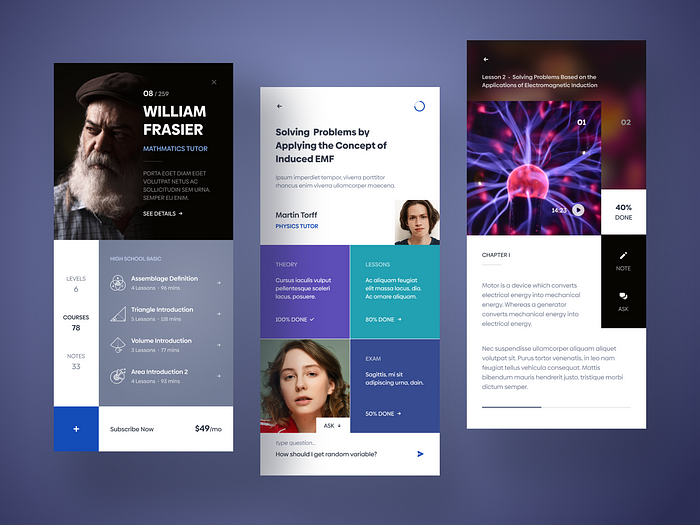

Emotional & Cognitive processing of software design
source link: https://uxplanet.org/emotional-cognitive-processing-of-software-design-74d166c11a29
Go to the source link to view the article. You can view the picture content, updated content and better typesetting reading experience. If the link is broken, please click the button below to view the snapshot at that time.

Emotional & Cognitive processing of software design
Three levels of influence

When designing a digital product, there are three levels of emotional and cognitive processing to consider: visceral, behavioral, and reflective. These levels were established by Don Norman in his 2005 book Emotional Design. The three levels are based on years of cognitive research and provide an articulated structure for interpreting user responses to product and brand interactions. Understanding these levels of processing is necessary in order to create meaningful connections between users and products.
Visceral
The visceral level of emotional processing is the first impression of the software. This initial processing consists of visual, sound, and haptic feedback. This first impression sets the tone for the perception of the product before any further interactions occur. The visceral reaction should align with the purpose of the application and create the appropriate emotional or psychological affect for a specific circumstance. For example, a banking application should evoke feelings of security, integrity and trust while a music streaming application should elicit feelings of fun, connection and happiness.
The perception of the visceral design is reality for the user. Usability researchers have demonstrated that a beautiful interface will be accepted as superior to an ugly interface before the user has any interaction with the system’s behavior.

Behavioral
The secondary level of processing is focused on behavior. These are the simple, everyday tasks and activities required for users to achieve their goals. Historically, product design has focused exclusively on behavioral processing and implementation-centric thinking. Behavioral processing influences and is influenced by lower-level visceral and higher-level reflective processing. Behavioral design should align with the user’s established perspective and mental model.
Behavioral design is unique because its interpretation is directly influenced by visceral and reflective processing. Therefore, the success of visceral and reflective design is dependent on the foundation of the behavioral design undergirding the user experience.

Reflective
The last and least immediate level of processing is based on reflection. It requires consideration of the user experience after using a product and reflecting on its overall impression on the user. Reflective processing can influence behavioral processing but is disconnected from initial visceral reactions to a product. Cognitive processing of the reflective level is only available through the user’s memory. Reflective processing has the power to imbue designed artifacts with personal meaning and value through consideration and reflection.
Long term emotional connections to a product are established through reflective processing. To create reflective meaning a product must go above and beyond addressing a users goals and become relevant to their personal and cultural perspective and identity.

Conclusion
In conclusion, crafting a design strategy focused on the visceral, behavioral, and reflective impressions of a product can differentiate it from competitive products with similar functionality that lack the consideration for these three levels of influence. The appropriate visual language, user experience and emotional appeal can create a powerful product with a loyal following. Investing the time to thoughtfully address these opportunities to influence the user in a meaningful way will provide a distinct advantage to a product.
Thank you for reading.
Connect with me
📖 Medium
💎 Dribbble
📄 Linkedin
References 👇
Emotional Design: Why We Love or Hate Everyday Things by Don Norman
Recommend
About Joyk
Aggregate valuable and interesting links.
Joyk means Joy of geeK